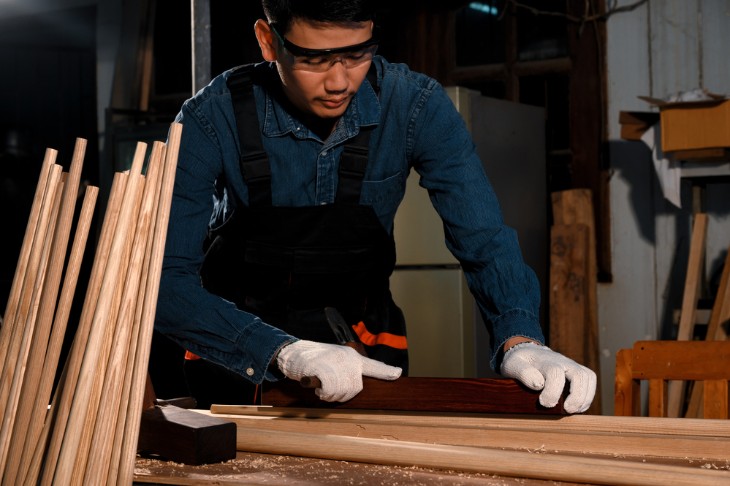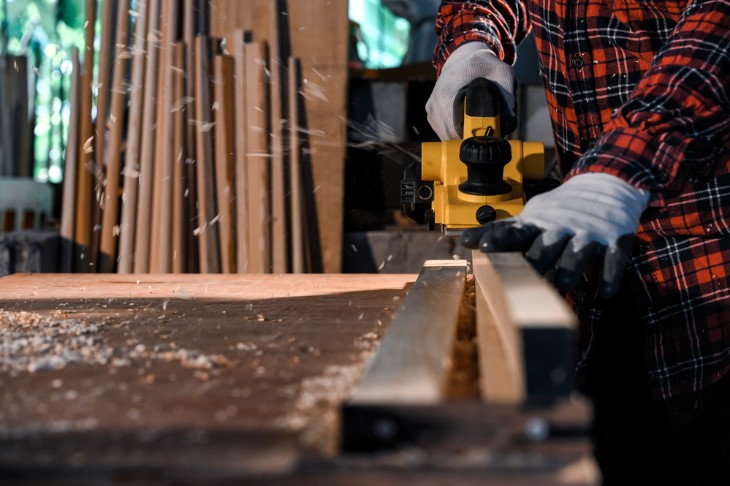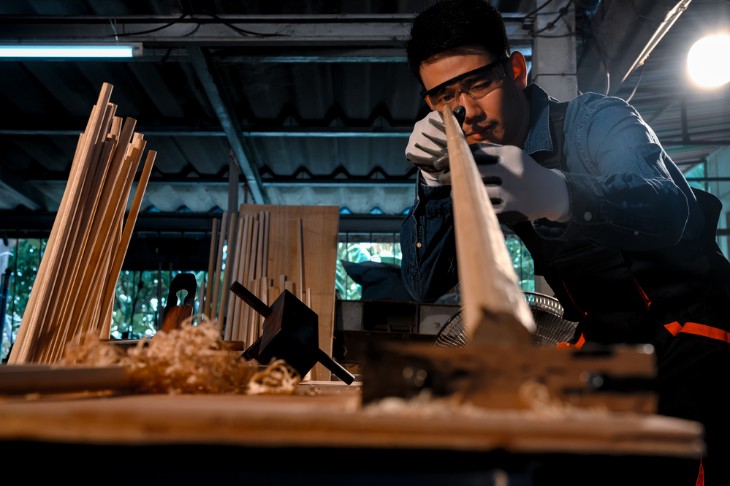Selecting the Right Wood
When considering how to make a snooker cue, the selection of wood plays a pivotal role in determining the cue's overall quality and performance. The choice of wood affects not only the cue's aesthetics but also its feel and responsiveness on the snooker table. Traditional cues are often crafted from various types of wood, but two primary woods stand out for their exceptional qualities: ash and maple.
Ash wood, known for its straight grain and excellent shock-absorbing properties, is a popular choice among cue makers. Its durability and consistent density make it ideal for crafting the cue shaft. Conversely, maple wood, with its attractive grain patterns and smooth finish, is commonly used for the cue's butt section. Maple's hardness and stability allow for intricate designs and inlays. Both these woods have their merits, and many cue makers even use a combination of ash and maple for the best of both worlds.
Beyond the wood type, it's essential to consider factors such as moisture content and grain orientation when selecting the wood. Properly dried wood with a straight and even grain pattern is crucial for crafting a snooker cue that performs consistently.
Preparing the Cue Blank
To begin, the selected wood, whether ash or maple, should be carefully inspected for any defects, knots, or irregularities. These imperfections can compromise the cue's structural integrity and performance. Once the wood has been thoroughly examined and approved, it's time to cut it down to the desired length, which typically ranges from 57 to 59 inches for a standard snooker cue.
After the initial cut, the cue blank is squared off to ensure uniform dimensions throughout its length. This is a critical step, as any irregularities in the blank's shape can lead to inconsistencies in the final cue. Once squared, the blank is then allowed to acclimate to the workshop's environment to achieve the ideal moisture content, ensuring stability and preventing warping.
Understanding Cue Length and Weight
Cue length is a fundamental consideration. Standard snooker cues typically measure between 57 to 59 inches. The choice of length depends on the player's preferences and playing style. A shorter cue provides better control and maneuverability, ideal for players who prefer tight, precise shots. On the other hand, a longer cue can enhance the player's reach and power but may be slightly less maneuverable. As cue making is a highly customisable craft, players can have cues tailored to their preferred length, ensuring a perfect fit for their individual playing style.
Weight is another critical aspect. The weight of a snooker cue is primarily influenced by the materials used and the density of the wood. Lighter cues are easier to handle and maneuver quickly, making them suitable for players who prioritize finesse and precision. Heavier cues, on the other hand, offer more stability and can help generate additional power and follow-through in shots. As cue makers, understanding how to balance these aspects is essential to crafting cues that cater to a wide range of player preferences.

Shaping the Shaft
The process of shaping the cue shaft is a pivotal step in mastering how to make a snooker cue. The shaft's shape greatly influences a player's grip, comfort, and ultimately, their performance on the table.
The shaping of the shaft begins by removing excess wood from the cue blank. This not only defines the overall diameter of the shaft but also establishes the desired taper from the base to the tip. The tapering is a critical element, as it affects the cue's flexibility and how it transmits energy to the cue ball during a shot.
To achieve the desired taper, cue makers employ a lathe, a precision tool that rotates the cue blank while a cutting tool shapes it. Careful craftsmanship ensures that the shaft's diameter decreases gradually towards the tip, resulting in a smooth and consistent taper. The cue maker must maintain precision throughout this process to ensure that the cue's performance meets the player's expectations.
Crafting the Cue Tip
Crafting the cue tip is a meticulous step in the process of learning how to make a snooker cue. The tip is the point of contact between the cue ball and the cue, making its quality crucial for precise and controlled shots. Typically, cue tips are made from leather, and their selection and installation require precision.
The first step in crafting the cue tip is to choose the right type of leather. Quality leather tips provide the necessary grip and spin on the cue ball. Once the leather is selected, it's time to shape and install the tip. This involves trimming the leather to the desired size and shape, typically dome-shaped to enhance contact with the cue ball.
Installing the cue tip requires adhesive to secure it firmly to the cue's ferrule. Ensuring that the tip is properly aligned with the cue's centerline is crucial for accurate shots. Skilled cue makers meticulously shape and scuff the tip's surface to optimize cue ball control. Crafting a cue tip that strikes the perfect balance between grip and finesse is an art in itself and a key aspect of making a high-quality snooker cue.
Creating the Butt
The creation of the butt involves intricate woodworking and design. It begins with shaping the butt to the desired dimensions and aesthetics. Players often have specific preferences for the butt's shape, whether they prefer a sleek and simple design or a more intricate and ornate appearance. This is where cue makers' artistic skills shine as they carve and shape the wood, bringing the player's vision to life.
The butt's weight is also a crucial consideration. Experienced cue makers carefully add or remove weight from the butt to achieve the desired balance. This is a bespoke process, as each player may have a unique preference for how they want their cue to feel in their hands. Adding weights or adjusting the cue's weight distribution is a precise task that impacts the cue's overall performance. Ultimately, the butt not only contributes to the cue's functionality but also reflects the player's personal style and identity on the snooker table.
Assembling the Cue Components
The first step in assembling the cue is attaching the ferrule, a small collar located at the tip of the cue shaft. This ferrule serves as a bridge between the shaft and the cue tip, ensuring a secure connection. The ferrule must be precisely aligned with the cue's centerline, as any misalignment can result in off-center shots and decreased accuracy.
Following ferrule installation, the cue tip is affixed to the ferrule using adhesive. It's essential to ensure that the tip is properly centered and securely bonded to the ferrule. This meticulous process guarantees that the cue delivers consistent and reliable performance when striking the cue ball.
Installing the Ferrule and Joint
The ferrule is typically made from materials like ivory or composite materials and serves to reinforce the tip's attachment to the shaft. Its installation requires precision and alignment with the cue's centerline to ensure accurate shots. Adhesive is used to bond the ferrule securely to the shaft, and the cue maker carefully checks for any imperfections in this crucial connection.
The joint, often known as the cue's "engine room," is a threaded mechanism that joins the butt and shaft. This component allows players to disassemble and transport their cues conveniently. Installing the joint requires precise machining and threading to ensure a snug fit without any wobbling or play. The accuracy of the joint's installation directly impacts the cue's overall balance and feel.
Applying the Finish
The choice of finish is crucial, as it can significantly affect the cue's final look and feel. Cue makers often use a combination of oils and varnishes to achieve the desired result. These substances penetrate the wood, enhancing its natural beauty and grain patterns. The finish is applied carefully and evenly to avoid any drips or uneven spots, ensuring a smooth and glossy appearance.
Beyond aesthetics, the finish plays a functional role. It acts as a barrier against moisture, preventing the cue from warping or deteriorating over time. Properly applied, the finish can prolong the life of a snooker cue, making it a reliable companion for countless games on the green baize.
Sanding and Polishing
Sanding and polishing are the concluding acts in the meticulous process of learning how to make a snooker cue. These stages serve to refine the cue's appearance and feel, ensuring that it meets the high standards of quality and craftsmanship that players expect.
Sanding begins with a coarse-grit sandpaper and progresses to finer grits, with the goal of smoothing out any imperfections in the cue's surface. It's a delicate balance between removing any roughness and preserving the cue's carefully applied finish. Skilled cue makers exercise patience and precision during this phase to achieve a flawlessly smooth surface.
Following sanding, the cue undergoes a meticulous polishing process. Specialized compounds and buffing wheels are employed to bring out the cue's natural shine. The polishing not only enhances the cue's aesthetics but also contributes to its smooth and comfortable grip. It's in this stage that the cue's true beauty emerges, with the wood's grain patterns and finish coming together in a visually pleasing and tactile manner.

Quality Control and Testing
In the process of learning how to make a snooker cue, quality control and testing are the final steps that guarantee a cue's performance and durability. The importance of these measures cannot be overstated, as they ensure that the cue meets the highest standards before it reaches the hands of a snooker player.
Quality control begins with a meticulous examination of the cue's components and finish. Cue makers inspect the cue for any imperfections, including cracks, blemishes, or irregularities in the finish. Any issues found are addressed promptly to ensure that the final product is of the utmost quality. This attention to detail is a hallmark of skilled cue makers who take pride in their craft.
Testing the cue's performance is equally critical. A cue that performs consistently is essential for a snooker player to develop their skills and maintain precision on the table. Testing involves carefully assessing aspects such as cue ball control, cue balance, and cue tip responsiveness. This rigorous evaluation ensures that the cue delivers the desired performance and that it meets the player's specifications.
By implementing stringent quality control and testing procedures, cue makers can confidently stand behind their creations, knowing that each cue is a testament to their craftsmanship and dedication to producing high-quality snooker cues.
Conclusion
In conclusion, mastering how to make a snooker cue is a blend of craftsmanship, precision, and dedication. From the initial selection of the right wood to the final stages of quality control and testing, every step in cue making plays a crucial role in creating a cue that meets the exacting standards of snooker players.
Crafting a snooker cue is not just a technical process; it's an art form that combines tradition and innovation. Skilled cue makers meticulously shape, balance, and finish each cue, ensuring that it not only performs at its best but also reflects the player's individual style.
For more information:




.webp)


 (1).webp)




















